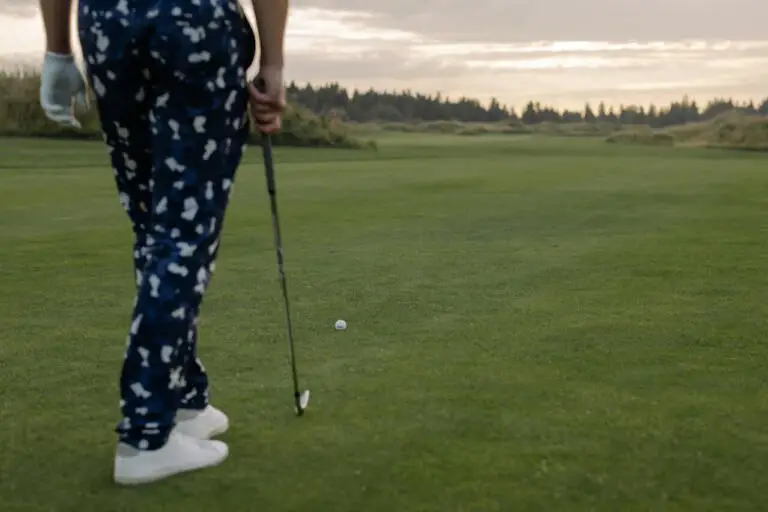Beginner’s Guide to Golf Course Hazards and How to Avoid Them

Alright golfers, welcome to our beginner’s guide to golf course hazards and how to avoid em! If you’re new to the game of golf, you might be wondering what exactly a golf course hazard is and why they’re important to avoid.
A golf course hazard is any feature on the course that can interfere with your play and cause problems for ya- like water hazards (like lakes or streams), sand traps, rough (long grass), out-of-bounds areas, and obstructions (like trees or bunkers); These hazards can make it more difficult for ya to hit a good shot, and they can also add strokes to your score.
It’s important to avoid hazards cause they can slow down your game and make it way more frustrating. They can also cause you to lose a ton of balls, which can be expensive… By learning how to avoid hazards and how to deal with them when you do encounter them, you’ll be able to play a better game and have more fun on the course.
In this guide, we’ll go over the different types of golf course hazards and provide strategies and tips for avoiding them and managing your game!
Types of Golf Course Hazards
So when we’re out on the course, there’s a few different types of hazards we gotta watch out for such as:
- Water hazards
- Sand traps
- Rough grass
- Out-of-bounds areas
- Obstructions
First up, there’s water hazards. Ya know, those lakes or streams that can really mess up your game if you hit your ball in there. You have to take a penalty stroke and hit your next shot from the spot the ball went in; it’s a real bummer.
Next, we got sand traps. These are those sandy areas that are tough to get out of. If you end up in one, you gotta use that special technique to get it out. It ain’t easy, but practice makes perfect.
Then there’s rough – which is that long grass on the course that surrounds the fairway. It’s pretty tough to hit a good shot from the rough, cuz the grass can mess with your club’s movement.
Out-of-bounds areas are no good either – those are the areas where it’s not allowed to play from, usually marked by white stakes or lines. If your ball goes out-of-bounds, you gotta take a penalty stroke and hit your next shot from the spot where the ball went out-of-bounds.
And lastly, there’s obstructions – like trees, bunkers or even buildings that can get in your way. If your ball comes to rest against an obstruction, you may be allowed to move the ball or play it as it lies- but it’s best to check with the course rules before making a move.
So those are the main hazards we got to watch out for when we’re out on the course. Knowing what they are, and how to handle ’em, is key to having a good game.
Strategies for Avoiding Hazards
So we all know hazards on the golf course can be a real pain in the ass, but there’s a few things we can do to minimize our chances of running into them:
- Plan your shots before you play
- Choose the right club for the shot
- Pay attention to course conditions
- Ask for advice if you’re not sure
First off, planning our shots is key. Before we take our swing, we gotta take a sec to assess the lay of the land and think about where we want the ball to go. We gotta consider the location of hazards and try to plan a shot that’ll keep us away from ’em.
Next, we gotta make sure we’re using the right club for the shot. Different clubs are designed for different types of shots, and using the wrong one can up our chances of landing in a hazard. Like if we’re facin’ a shot over a water hazard, we might wanna use a higher-lofted club (like a wedge) to get more height on the ball.
We also gotta pay attention to the course and its conditions. Slope of the fairway, direction and strength of the wind, all that can affect the trajectory of our ball. And we should look for clues like footprints in the sand or divots in the grass to get an idea of how the ball is likely to roll or bounce.
And lastly, don’t be afraid to ask for help. If we’re having trouble with a particular shot or course, we should seek advice from a golf professional. They’re trained to analyze courses and provide advice on the best way to play ’em.
By following these strategies, we’ll increase our chances of hitting good shots and avoiding hazards.
Tips for Dealing with Hazards
Even the best of us can run into hazards on the course. So here’s a few tips for dealing with ’em when they do come up:
- Stay calm and focused
- Master the sand
- Aim away from hazards
- Make smart decisions
First off, stay calm and focused. It’s easy to get all worked up when we hit a hazard, but we gotta stay cool and keep our focus. Take a deep breath and remind ourselves that it’s just one shot.
If our ball is in a sand trap, not to worry… We just open the face of our sand wedge, put the ball up in our stance and take a wider stance than we normally would. Make a 3/4 swing and aim for a spot about an inch behind the ball while remembering to follow through on impact (the sand will slow the club down, so keep the speed up!). This’ll help to get underneath the ball and splash it out of the trap.
One of the best tips for dealing with hazards is to make a good decision beforehand to avoid hazards.. Take one club less, or aim for the opposite side of the fairway.
And if our ball goes into a water hazard anyways, we’ll just have to make another smart decision. We can play the ball as it lies and try to hit it out of the water if it’s shallow enough; we can take a penalty stroke and hit our next shot from the spot where the ball went into the water, or we can drop a new ball behind the hazard and play it from there (with a one-stroke penalty). Remember that golf is a game of decision making, don’t let it stress you out.
By staying calm and using proper technique, we’ll be better equipped to deal with hazards when they come up.
Final Thoughts on Handling Golf Course Hazards
Alright guys and gals, so we just went over all the different types of hazards we might come across on the golf course, and a few tips and strategies for dealing with them. Just to recap – hazards are any feature on the course that can mess with our game (like water hazards, sand traps, rough, out-of-bounds areas, and obstructions). To avoid them, we have to plan our shots, choose the right club for each shot, pay attention to conditions, and seek advice if you’re truly lost. And when we do come across a hazard, we got to stay calm and stick to a game plan to deal with it.
And remember, the more we practice and improve our game, the better we’ll become at avoiding and dealing with hazards. Golf can be a real challenge, but it’s also super rewarding. And by learning how to navigate the hazards of the course, we’ll be able to enjoy it even more. So let’s not be afraid to get out there and give it a try!






